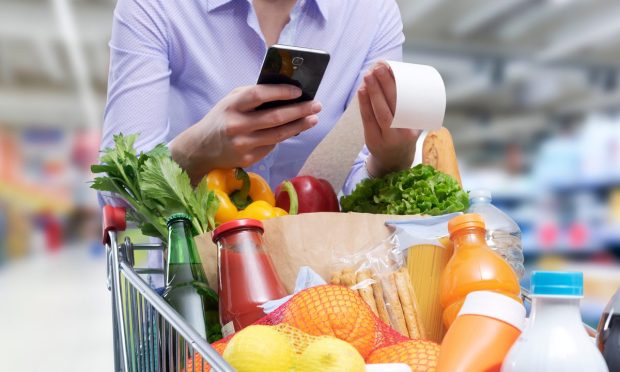Will Consumers’ Response to Inflation Be as Accurate as Their Outlook on COVID?

Back in March of 2020, it was all about “the new normal,” and then trying to get to “the next normal.”
It’s been two years since lockdown-living first descended on the U.S., and it’s evident that we’re not clear yet. As one side of the world talks of the great reopening, the other is confronting another round of rising case counts.
As time goes by, it seems as if “never normal” may better apply. PYMNTS’ first COVID-19 studies in 2020 saw the date of recovery and reopening move, then move again. And again.
And it’s still moving.
So with COVID-19 variants raging across parts of the world and inflation ravaging household budgets and entire economies in ways not seen in three generations, consumers once again are faced with making highly personal and impactful decisions in the face of maximum economic uncertainty.
If the past is any indication, 24 months of PYMNTS data have shown that consumers have consistently erred on the side of caution and skepticism, a trait that has made their somewhat pessimistic predictions downright prescient compared to the hope-filled forecasts of the so-called punditocracy.
Although the impending round of financial decision-making is tied to inflation-driven belt tightening and will reflect our personal beliefs about how harmful and long this price crisis will be with us, there are parallels with prior rounds of COVID-related personal choices about masks, vaccines, boosters, work, school and whether, how and when to reopen the economy.
For example, our April 11, 2020 study stated, “It has been five weeks since the World Health Organization (WHO) declared COVID-19 a pandemic, but consumers now feel the end is even further away, with our research finding nearly 45% of consumers expect the pandemic to last six months or longer.”
What is significant about that prognosis is that it had not only risen by 12 percentage in two weeks but was also in stark contrast to the widely held notion that our pandemic problems would all end soon with a dose of warm spring air and sunshine.
Said another way: Consumers 1, Pro Forecasters 0.
See: Life On Lockdown (March 2020)
Although no one knew it or trusted it at the time, a month later the great digital shift had begun. In the May 2020 edition of Life On Lockdown PYMNTS found that nearly 72% of small and medium-sized businesses (SMBs) were improving or adding digital capabilities, with almost 50% adding or augmenting order-ahead features. In short, hedging against an unknown future but hoping for the best.
By June 2020, government confidence data was on the rise, even though PYMNTS data showed the average consumer expects the COVID-19 pandemic to last another eight or nine months until February 2021 – roughly double the disruption that had been anticipating three months before.
Check it Out, June 2020 Research: Neither U.S. Consumers Nor Epidemiologists Expect To Get Back To Normal Any Time Soon
By the end of 2020 with the traditional holiday season gatherings and gift giving ruined, PYMNTS’ Main Street SMBs – The 18 Month Outlook report showed 54% of merchants said they felt their businesses were very or extremely likely to survive the pandemic.
See: Pandenomics – Main Street SMBs The 18 Month Outlook (December 2020)
However, a separate study released the same month in the wake of a contentious presidential election and rising hopes that a mass, rapid vaccine rollout was imminent, PYMNTS data showed the average consumer believed it would be another 423 days (about 14 months) before things returned to normal.
Once again, consumers’ instinctive weathervane would prove to be correct.
Read Our December 2020 Study: To Vaccinate Or Not To Vaccinate: Measuring The Impact Of A Covid-19 Vaccine On Consumers’ Digital Lifestyles
After the Year of Living Uneasily
By springtime, vaccines were coming, and consumers and merchants had over a year of experience under their belts with life under COVID, and had largely adapted to new ways to shop, eat, learn, work and more. And yet, as much as the digital shift was entrenched, growing and becoming a preferred new normal for activities like BOPIS and curbside pickup, consumers were far from convinced that we were out of the woods yet.
Fast-forward to the present, with a second holiday shopping season disrupted and the on-again, off-again, on-again rise of the Omicron variant refusing to go away, consumers’ sensibilities were being tested again in the new year.
Back-to-work orders began to rise and long-standing mask mandates began to fall, and hopes were rising that the worst was over. However, by the end of February, those hopes would be dashed by an unexpected, but now all too familiar war and the generational economic turmoil it has unleashed on the world.
And so today, with official inflation already running at a 40-year high of 7.9% and pegged to touch double-digits when the March data is out in two weeks, consumers are once again being forced to play the role of household economists and make judgement calls and take budgetary actions that professionals are unable to.
While the world is hoping for a rapid end to the military conflict that has roiled oil markets and jolted economies everywhere, early anecdotal evidence is showing that — in just three weeks — consumers have already begun to react to and re-tool their personal spending habits in the face of record high gasoline prices and inflation.
How long and how deeply the current blow to purchasing power will last remains to be seen, but if history is a guide, there’s a good chance that it will be longer than expected.
